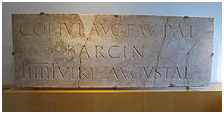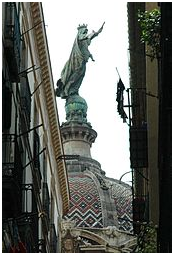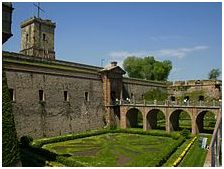Learn about GSM’s fascinating home: Barcelona
Located conveniently near to the gardens and the charm of the Parc de Moterols, the Graduate School of Management in Barcelona is happy to participate so intimately in the life and energy of this vibrant and historical city. Read below to learn more about the origins of this beautiful city, which will help you understand and situate your post-graduate studies in the timeline of Western European history.
The name Barcelona comes from the ancient Iberian Barkeno, in Ancient Greek sources as Βαρκινών, Barkinṓn; and in Latin as Barcino, Barcilonum and Barcenona.
During the Middle Ages, the city was variously known as Barchinona, Barçalona, Barchelonaa, and Barchenona.
Some sources say that the city may have been named after the Carthaginian general Hamilcar Barca, who was supposed to have founded the city in the 3rd century BC.
Barcelona's name is usually abbreviated as 'Barna'. Foreigners often erroneously abbreviate Barcelona as 'Barça', the popular name of Barcelona football club. Spaniards also use 'BCN', often written 'Bcn' or 'bcn', which actually corresponds to the IATA airport code of the Barcelona-El Prat Airport. The city is also referred to as the Ciutat Comtal in Catalan, and Ciudad Condal in Spanish, owing to its past as the seat of the Count of Barcelona.
History
 |
| A marble plaque in the Museu d'Història de la Ciutat de Barcelona, dated from around 110-130 AD and dedicated to the Roman colony of Barcino |
The rigin of the earliest settlement at the site of present-day Barcelona is unclear. Around the actual neighborhood of Raval have been found remains of an early settlement, including different tombs and a hut from 5.500 BC. The founding of Barcelona is the subject of two different legends. The first attributes the founding of the city to the mythological Hercules. The second legend attributes the foundation of the city directly to the historical Carthaginian Hamilcar Barca, father of Hannibal, who named the city Barcino after his family in the 3rd century BC.
In about 15 BC, the Romans redrew the town as a castrum (Roman military camp) centerd on the "Mons Taber", a little hill near the contemporary city hall (Plaça de Sant Jaume). Under the Romans, it was a colony with the surname of Faventia, or, in full, Colonia Faventia Julia Augusta Pia Barcino or Colonia Julia Augusta Faventia Paterna Barcino. Pomponius Mela mentions it among the small towns of the district, probably as it was eclipsed by its neighbour Tarraco (modern Tarragona), but it may be gathered from later writers that it gradually grew in wealth and consequence, favoured as it was with a beautiful situation and an excellent harbour. It enjoyed immunity from imperial burdens.The city minted its own coins; some from the era of Galba survive.
 |
| Basilica of La Mercè (Mare de Déu de la Mercè) |
Important Roman vestiges are displayed in Plaça del Rei underground, as a part of the Barcelona City History Museum MUHBA; the typically Roman grid plan is still visible today in the layout of the historical center, the Barri Gòtic (Gothic Quarter). Some remaining fragments of the Roman walls have been incorporated into the cathedral. The cathedral, also known as the Basilica La Seu, is said to have been founded in 343. The city was conquered by the Visigoths in the early 5th century, becoming for a few years the capital of all Hispania. After being conquered by the Arabs in the early 8th century, it was conquered in 801 by Charlemagne's son Louis, who made Barcelona the seat of the Carolingian "Hispanic March" (Marca Hispanica), a buffer zone ruled by the Count of Barcelona.
The Counts of Barcelona became increasingly independent and expanded their territory to include all of Catalonia, although on 6 July 985, Barcelona was sacked by the army of Almanzor. The sack was so traumatic that most of Barcelona's population was either killed or enslaved. In 1137, Aragon and the County of Barcelona merged in dynastic union by the marriage of Ramon Berenguer IV and Petronilla of Aragon, their titles finally borne by only one person when their son Alfonso II of Aragon ascended to the throne in 1162. His territories were later to be known as the Crown of Aragon, which conquered many overseas possessions and ruled the western Mediterranean Sea with outlying territories in Naples and Sicily and as far as Athens in the 13th century. The forging of a dynastic link between the Crowns of Aragon and Castile marked the beginning of Barcelona's decline. The Bank of Barcelona, probably the oldest public bank in Europe, was established by the city magistrates in 1401. It originated from necessities of the state, as did the Bank of Venice (1402) and the Bank of Genoa (1407).
 |
| Barcelona in 1563 |
The marriage of Ferdinand II of Aragon and Isabella I of Castile in 1469, united the two royal lines. Madrid became the center of political power whilst the colonisation of the Americas reduced the financial importance (at least in relative terms) of Mediterranean trade. Barcelona was a center of Catalan separatism, including the Catalan Revolt (1640–52) against Philip IV of Spain. The great plague of 1650–1654 halved the city's population.
 |
| The fortress at Montjuïc, most southerly point from which measurements were made when calculating the meridional definition of the metre |
In the 18th century, a fortress was built at Montjuïc that overlooked the harbour. In 1794, this fortress was used by the French astronomer, Pierre François André Méchain, for observations relating to a survey stretching to Dunkirk that provided the official basis of the measurement of a metre. The definitive metre bar, manufactured from platinum, was presented to the French legislative assembly on 22 June 1799. Much of Barcelona was negatively affected by the Napoleonic wars, but the start of industrialization saw the fortunes of the province improve.
During the Spanish Civil War, the city, and Catalonia in general, were resolutely Republican. Many enterprises and public services were "collectivised" by the CNT and UGT unions. As the power of the Republican government and the Generalitat diminished, much of the city was under the effective control of anarchist groups. The anarchists lost control of the city to their own allies, the Communists and official government troops, after the street fighting of the Barcelona May Days. The fall of the city on 26 January 1939, caused a mass exodus of civilians who fled to the French border. The resistance of Barcelona to Franco's coup d'état was to have lasting effects after the defeat of the Republican government. The autonomous institutions of Catalonia were abolished, and the use of the Catalan language in public life was suppressed. Barcelona remained the second largest city in Spain, at the heart of a region which was relatively industrialised and prosperous, despite the devastation of the civil war. The result was a large-scale immigration from poorer regions of Spain (particularly Andalusia, Murcia and Galicia), which in turn led to rapid urbanisation. The city gained vitality in 1992 when it hosted the Olympic games.